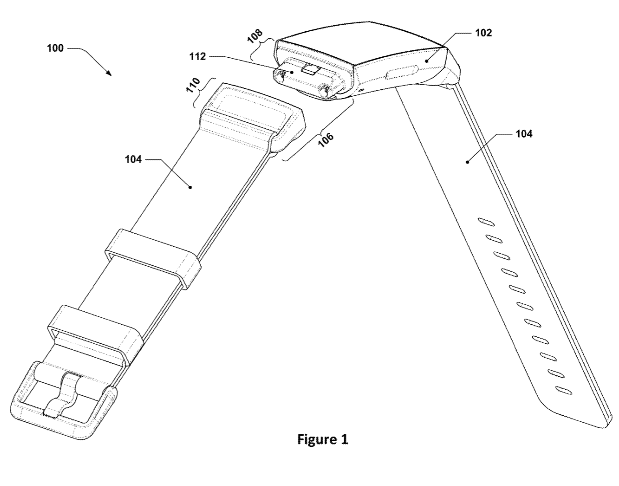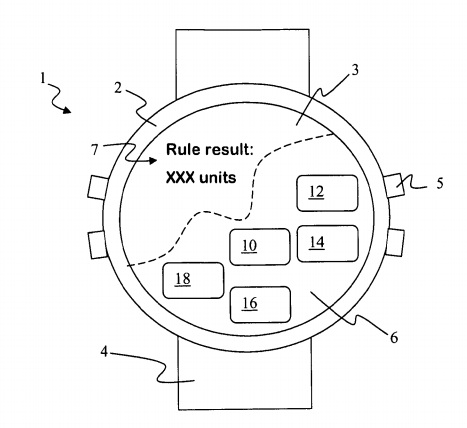09/02/2021
Wearable technology has become increasingly prevalent in recent times – almost a third of UK consumers now own a fitness band or smartwatch – with adoption of these devices expected to continue to increase in the coming years. This blog takes a look at three companies in the wearables industry – Garmin, Suunto, and Fitbit – their patent portfolios, and some of the IP-related challenges they have to face to ensure their products get protected.
Garmin
Garmin was founded as an American company in 1989, and initially sold handheld GPS receivers, before expanding to Sat-Navs and wearables once GPS became widely available for public use. Garmin now sell a number of products in a wide range of fields, from aviation and marine control to dog tracking. A quick search reveals Garmin are named on approximately 1850 published patents/ patent applications worldwide. Some of the most prevalent CPC classes that feature in these include: instruments for performing navigational calculations, sonar systems for mapping/imaging, and wristwatches with detecting/measuring/recording means.
Suunto
Suunto was founded as a Finnish company in 1936, following the company’s founder, Tuomas Vohlonen, successfully obtaining a patent for an enclosed compass housing. The compass housing was implemented on Suunto’s M-311 field compass, which could be worn on the wrist. Today, Suunto sells Sport watches, compasses and dive computers, amongst other items. Using the same search parameters, Suunto appear in approximately 610 published patents/patent applications. Some of the most prevalent CPC classes that feature in these include: detecting heart rate with a portable device, and detecting/diagnosing using ultrasonic or infrasonic waves in garments.
Fitbit
Fitbit is the youngest of the three companies considered, having only been founded in 2007. Fitbit predominantly sells smart watches and fitness trackers, and has recently been acquired by Google. Fitbit is named on approximately 1170 published patents/patent applications, and the most commonly used CPC classes include: determining an activity level from movement of body parts, wristwatches with detecting/measuring/recording means, inertial sensors, accelerometers, and tilt switches.
Each of these companies thus work in similar areas and file patents relating to wearable tech. These types of products have evolved in recent times, from standalone devices that required a user to manually record, stop and then upload a measurement or activity, to ever-more interconnected devices that do everything for you, automatically and seamlessly. Innovation along these lines brings specific IP challenges as we have explored below.
Hardware Developments
Many of the smart watches available today have similar physical components – a computer and an array of sensors, such as a barometer, accelerometer, gyroscope and heart rate monitor. Changes to hardware over the years have been minimalistic and incremental, and these are, for the most part, reflected in patents or at least patent applications. Garmin for example, introduced a solar watch face in their most recent iteration of the fēnixsmartwatch, having already obtained patents in the area (e.g. EP3028312B1 originally filed in the name of Sunpartner Tech). Suunto (e.g. EP2532262B1) and Fitbit (e.g. US10809666B2) also continue to obtain patents relating to the physical components of a watch.
Hardware such as this is usually quite clearly technical in nature. Whether it’s a solar-panel, a sensor, or even a watch-strap, it performs a physical task. The only major hurdles to getting a patent for these sorts of inventions are the requirements of novelty and inventive step.

Software Developments
As wearable tech becomes more connected, devices such as smart watches can provide more detailed feedback on your fitness and health, and allow for a wider range of medical and IoT uses. Some models can even predict whether you have COVID-19. These types of features do not necessarily correspond to new sensors or any tangible hardware within the smart watches themselves, and instead rely mostly on new software that makes better use of the existing hardware.
In the UK and Europe, patents directed at software can be trickier to prosecute due to the additional hurdle of excluded subject matter, and in particular, the legal framework surrounding the patentability of computer programs. For more information on this, see our previous blogs here and here. Despite this challenge, Garmin, Suunto and Fitbit file successfully pursue a large number of patent applications each year focusing on software and computer-implemented inventions.
Looking at a particular example of this, a Suunto patent application was the subject of a recent decision in UKIPO hearing O/461/19. The application related to a system and method wherein different users of different smart watches could create ‘events’ which allowed the users to share data such as heart rate data in real-time. During prosecution, the Examiner assigned to the application decided a search would serve no useful purpose, alleging the invention fell within excluded subject matter as it related to a computer program and a method for doing business as such. However, after reviewing the application and applying the correct legal tests (Aerotel/Macrossan, AT&T signposts), the Hearing Officer found that the contribution made by the invention did not fall within excluded subject matter, partly because it was used to carry out a technical process (collection and comparison of data) to improve the adaptability of sports watches. The application was thus remitted to the Examiner so that a search could be carried out and examination completed.
Similarly, in an earlier decision O/748/18 on GB1120938.4, the application related to a programmable user interface for a smart watch, which allowed the user to select from different variables and mathematical operators to define a custom mathematical formula for display on the watch face. In this way the underlying sensor information available to a user could be configured for output by the user according to their own requirements, allowing them to display ‘calories burnt measured in chocolate bars’, or ‘power output of the user based on altitude and speed’ according to an input conversion formula. The UK IPO Hearing Office noted that in field of wrist-watch computers for monitoring sports-related activities, the small size of the device imposes technical constraints on memory and power consumption and the need for compact but accessible input facilities via a small interface. Any adaptations made to the device to improve the user’s experience must address these issues.

As noted above, the most desirable aspects of smart watches to consumers may now lie in their functionality – what they can do with data to provide users with meaningful and interesting results. With more consumers expected to invest in wearable tech, we expect to see even more of these type of features appear in the future, and in particular, ones related to big-data comparisons between users as a collective.
Reddie & Grose has a wide breadth of experience in drafting and prosecuting patent applications for both electronics and software related inventions. If you have products in the wearables space, and are looking to obtain patent protection, or would like to discuss this or any of the content of this blog, please reach out to us.
This article is for general information only. Its content is not a statement of the law on any subject and does not constitute advice. Please contact Reddie & Grose LLP for advice before taking any action in reliance on it.



